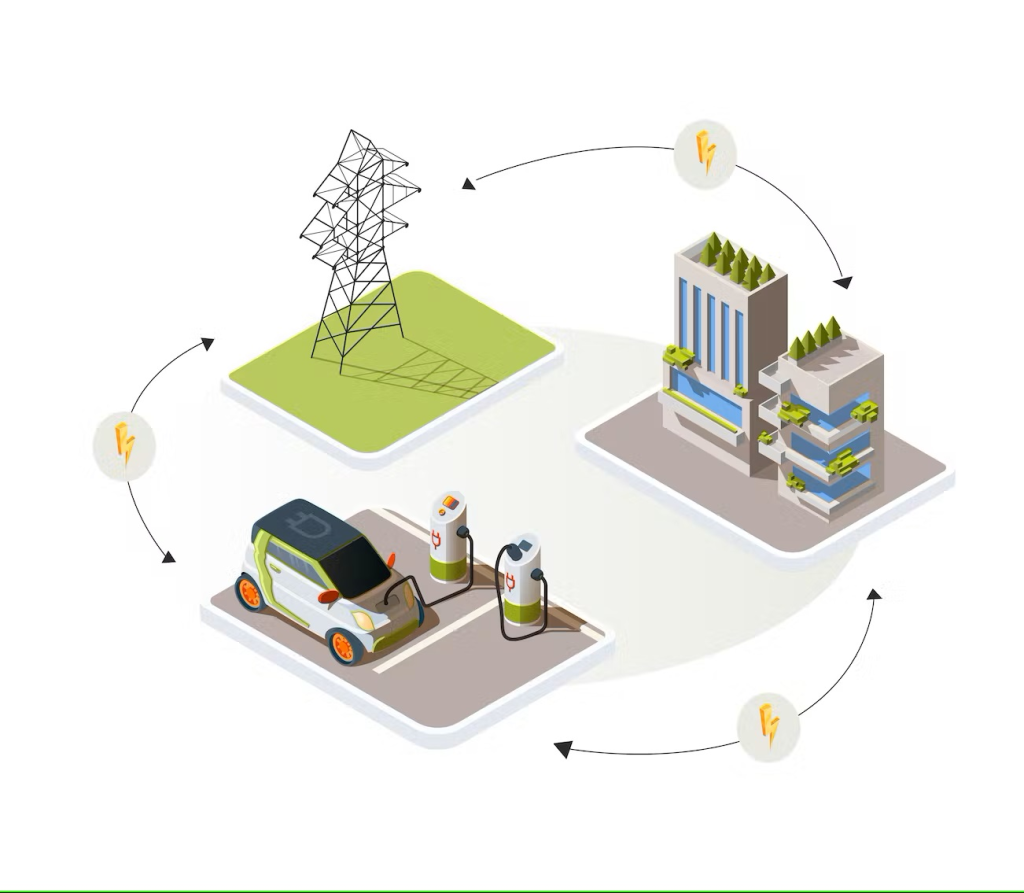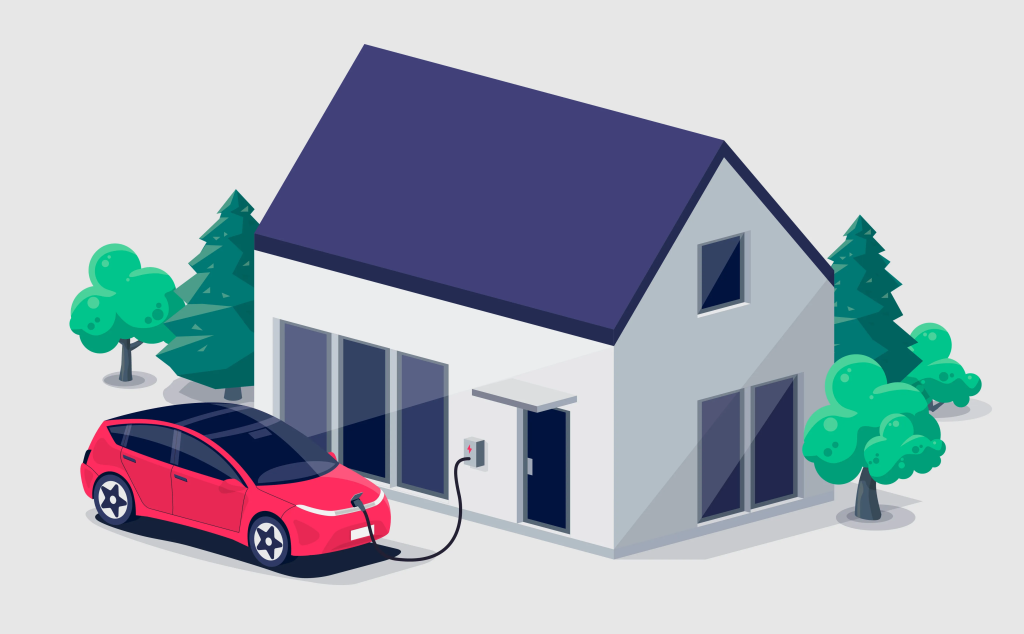
Products
Fast, Reliable, Everywhere

Solutions
Efficient, Innovative EV Charging Solutions.
News
We are committed to the innovation and application of EV charging.

Bidirectional charging is a groundbreaking technology in the electric vehicle (EV) industry that allows energy to flow both into and out of the vehicle’s battery. Unlike conventional charging, which only supports one-way energy transfer from the grid to the vehicle, bidirectional charging enables the vehicle to return energy to the grid or power other devices. This concept opens up new opportunities for energy management, making EVs more than just a mode of transportation—they become integral parts of the energy ecosystem.
The importance of bidirectional charging lies in its ability to enhance energy efficiency and support grid stability. As EV adoption increases globally, the demand for sustainable and efficient energy management solutions also rises. Bidirectional charging addresses this by transforming vehicles into mobile energy storage units capable of optimizing energy use, reducing costs, and even providing emergency power during outages.

Bidirectional charging allows an electric vehicle's battery to both receive energy from and send energy back to an external source, such as the power grid, a home, or another EV. This dual-directional flow enables EVs to function as energy assets, contributing power when needed and recharging during off-peak times when electricity rates are lower.
In traditional EV charging, the energy flow is unidirectional, moving only from the charging station to the vehicle. This limits the EV’s role to that of a passive energy consumer. Bidirectional charging, on the other hand, actively interacts with external systems, offering capabilities such as peak shaving, load balancing, and decentralized energy distribution.
Vehicle-to-Grid (V2G) is one of the most widely recognized forms of bidirectional charging. It allows EVs to feed stored energy back to the power grid, which can help balance demand during peak times and support renewable energy integration. V2G systems enhance grid reliability by reducing pressure on energy production facilities.
Vehicle-to-Home (V2H) technology enables an EV to supply power to a home. This setup can be particularly beneficial during power outages or when grid energy is expensive. By utilizing the car's battery, homeowners can save on electricity costs and reduce their reliance on traditional energy sources.
Vehicle-to-Load (V2L) allows an EV to directly power appliances or electronic devices. This type of bidirectional charging is ideal for activities such as camping, outdoor events, or emergency situations where portable power is necessary.
Vehicle-to-Vehicle (V2V) charging enables one EV to transfer power to another. This capability is especially useful in emergency situations where one vehicle needs a boost in battery power and can be aided by a nearby EV.
Bidirectional charging relies on a combination of hardware and software technologies. The key component is the inverter, which converts the direct current (DC) stored in the vehicle's battery to alternating current (AC) used by most power systems. The integration of smart charging software allows the system to manage when energy should flow in or out of the EV based on predefined conditions, such as peak energy rates or grid demand.
To enable bidirectional charging, specific infrastructure is required:
Bi-directional Inverter: Converts DC to AC and vice versa.
Smart Charger: Communicates with both the EV and the grid to control the flow of energy.
Energy Management System (EMS): Helps monitor and optimize energy usage to ensure that charging and discharging are done at the most efficient times.
With bidirectional charging, EV owners can charge their vehicles during off-peak hours when electricity rates are lower and discharge energy back to the grid or their homes during peak times when rates are higher. This practice can result in significant savings on electricity bills and optimize the use of renewable energy sources like solar power.
Bidirectional charging allows EVs to act as distributed energy resources, which can help stabilize the grid. By contributing power during high-demand periods, EVs reduce the need for traditional power plants to ramp up production, leading to lower emissions and more efficient energy distribution.
In times of power outages, bidirectional charging enables EVs to serve as backup power sources for homes or critical equipment. This functionality can be lifesaving during natural disasters or unexpected grid failures, providing reliable and mobile energy.
The integration of renewable energy, such as solar and wind, often faces the challenge of intermittency. Bidirectional charging can mitigate this issue by storing excess energy generated during peak production times and releasing it when renewable output is low, thereby balancing supply and demand.
The implementation of bidirectional charging requires specialized infrastructure, such as bi-directional inverters and smart chargers. These technologies can be expensive and may not be widely available, limiting access to full bidirectional capabilities for some consumers.
Repeated charging and discharging cycles can accelerate battery degradation. While advancements in battery technology are addressing these concerns, EV owners must consider the potential trade-offs between energy management benefits and long-term battery life.
The development and deployment of bidirectional charging also depend on supportive regulations and policies. In many regions, policies that enable energy trading and set standards for bidirectional charging are still in their infancy, which can slow down widespread adoption.

As interest in bidirectional charging grows, companies and governments are investing in research and pilot programs to expand its capabilities. Innovations in battery technology, grid management, and renewable energy integration are propelling the adoption of bidirectional systems.
Bidirectional charging could fundamentally change how energy is managed, moving from centralized production to a more decentralized, collaborative model where consumers are also energy producers. This shift would enhance resilience and sustainability across energy networks.
The future of bidirectional charging holds significant potential for commercial use, including fleet management and shared energy solutions. Commercial vehicles equipped with bidirectional technology can support microgrids and contribute to larger-scale energy strategies, making EVs an essential part of the renewable energy movement.
Bidirectional charging is revolutionizing the role of electric vehicles, turning them into active participants in the energy ecosystem. By enabling energy to flow both ways, EVs contribute to cost savings, grid stability, emergency backup solutions, and the adoption of renewables.
As technology and policies continue to evolve, bidirectional charging is set to play a crucial role in shaping a more sustainable and resilient energy future. This innovative approach not only supports the growth of electric mobility but also empowers individuals and businesses to become active contributors to the global energy landscape.
